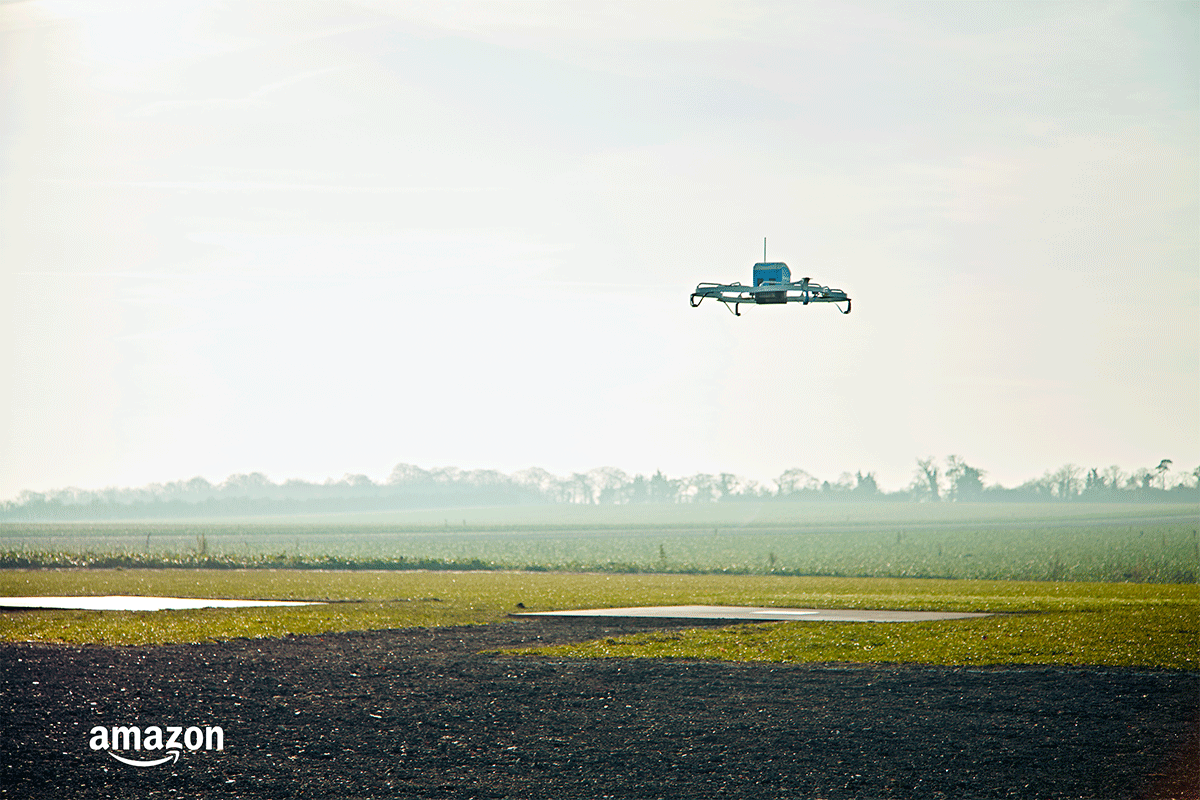On Wednesday December 14th Amazon.com announced it made its first commercial delivery using a drone a week earlier. The shipment took place in a rural area of Cambridge, U.K. and consisted of popcorn and a Fire TV video-streaming device to a farm house 13 minutes away from one of the giant retailer’s distribution centers.
Delivering products in densely populated areas or near busy airports is still a challenge and possible off-limits for the foreseeable future, but an increasing number of small towns and rural communities are now potential recipients for same day deliveries. Amazon.com is aggressively pursuing a strategy of drone deliveries to customers located within a 30-mile radius of one of these distribution centers.According to Amazon.com this initiative, known as Prime Air, “is designed to safely get packages to customers in 30 minutes or less using unmanned aerial systems.” As long as they fly under 400 feet and comply with FAA and other international civil aviation authorities, this technology is now closer than ever to be a daily reality in rural areas.Amazon.com and every other retailer are under tremendous pressure to reduce rising shipping costs, driven mainly by customer’s appetite for faster deliveries and the use of UAV’s is an integral part of this strategy. In order to launch their initiative all over the world Amazon has made public a couple of white papers destined to clearly outline their intentions with respect to the integration of the airspace and disclosing certain aspects of the reasoning behind their strategy.- Revising the Airspace Model for the Safe Integration of Small Unmanned Aircraft Systems.
- Determining Safe Access with a Best Equipped, Best-Served Model for Small Unmanned Aircraft Systems.
 The real benefits of drone delivery of goods sold over the internet will be realized when the technology and the regulations reach a level of maturity that would allow for flights beyond visual line of sight (BVLOS), therefore increasing the number of potential customers from a few thousand in the vicinity of existing distribution centers to millions in farther away areas. However, the only way that BVLOS operations will be allowed in areas with a higher population concentration is if we, as an industry, find the way to add detection technology that would ensure a safe distant between all flying machines in the sky, manned and unmanned.Once this hurdle is surmounted the number of parcels delivered the same day and by a drone will skyrocket and waiting days for a package will be a thing of the past.
The real benefits of drone delivery of goods sold over the internet will be realized when the technology and the regulations reach a level of maturity that would allow for flights beyond visual line of sight (BVLOS), therefore increasing the number of potential customers from a few thousand in the vicinity of existing distribution centers to millions in farther away areas. However, the only way that BVLOS operations will be allowed in areas with a higher population concentration is if we, as an industry, find the way to add detection technology that would ensure a safe distant between all flying machines in the sky, manned and unmanned.Once this hurdle is surmounted the number of parcels delivered the same day and by a drone will skyrocket and waiting days for a package will be a thing of the past. 














Comments